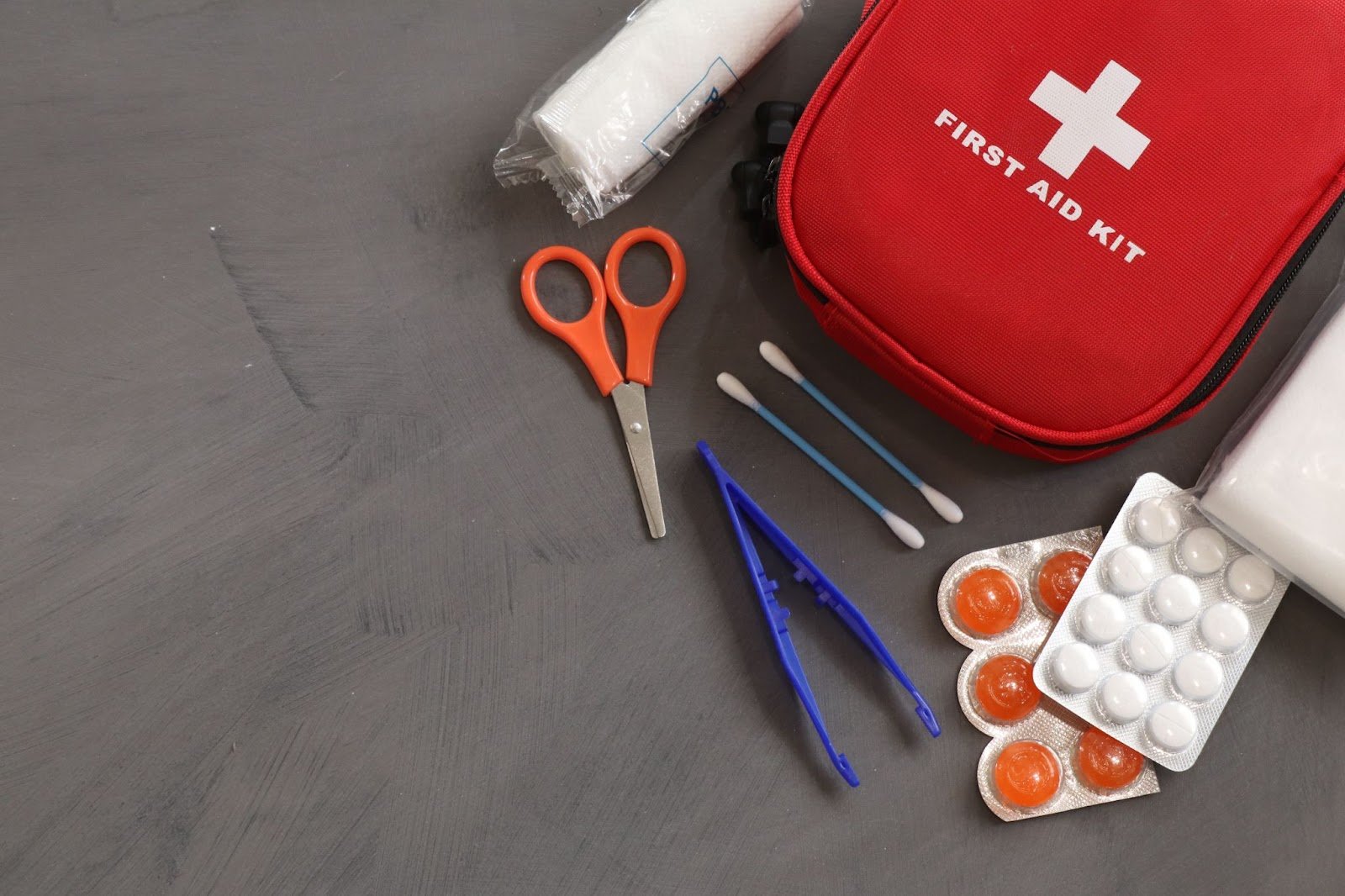SafeDE News
Smarter workplaces are safer workplaces. SafeDE is your resource for OSHA news, regulation changes, recalls, and everything to keep your business safe.
GHS Label Requirements for Shipping: Tips and Guidelines
Ever notice how some shipping containers carry 'Warning” labels or symbols such as large exclamation points? This is part of the Globally Harmonized System of Classification and Labelling of Chemicals (GHS), an international standardized approach to classifying substances based on physical, health, and environmental hazards.
The GHS aims to protect human life and the environment during the handling, transport, and use of dangerous substances. The United Nations published the first edition of the GHS in 2003, revising it every two years, with the latest edition being the tenth (GHS Rev. 10) released in 2023. In this article, we will discuss the different components of the most up-to-date GHS for harmful and dangerous substances.
GHS Label Requirements for Shipping: What You Need to Know
When it comes to shipping hazardous substances, proper labeling is crucial for the safety of all stakeholders. GHS prescribes specific label elements that must be included on containers of hazardous substances during transportation. These elements are product identifiers, pictograms, signal words, hazard statements, precautionary statements, and manufacturer information.
They also appear on safety data sheets to provide comprehensive and easily interpretable information for the safe handling, transport, and use of chemicals.
1. Product Identifier
The product identifier includes the name of the hazardous substance inside the container, and a unique code number, or batch number. This component is usually found on the top left-hand corner of the GHS label. The product identifier ensures that users, emergency responders, and workers across various industries and regulatory contexts can readily access and comprehend crucial details about the nature of the substance.
2. Pictograms
GHS employs standardized pictograms to visually represent different hazard categories. These are easily recognizable symbols on shipping containers that help you understand the nature of the hazard.
Health Hazard Pictograms
The GHS uses four symbols to indicate substances that can cause harmful effects on the human body such as irritation, disease, and poisoning. Chemicals labeled with any health hazard pictogram should be tightly sealed in their containers until more information is learned about them.
Toxic Symbol
GHS uses the skull-and-crossbones as the universal symbol for a toxic hazard. This pictogram is used to label chemicals with the highest toxicity levels. Humans are usually exposed to these substances through inhalation, ingestion, or skin contact. Extreme caution is advised when handling chemicals with the toxic pictogram as they may cause severe or even lethal effects on human health.
Harmful Symbol
Harmful substances are labeled by the GHS using the exclamation point pictogram. These chemicals are less severe for human health than those labeled with the toxic symbol. However, they may still cause drowsiness, dizziness, and irritation to the eyes, skin, or respiratory tract.
Physical Hazard Pictograms
Physical hazards not only endanger human life but also non-living objects like structures and vehicles. The GHS uses five symbols to warn about substances with properties that can cause physical damage.
Corrosive Symbol
Corrosive substances can degrade or dissolve any material that they make contact with. These chemicals also cause skin burns and eye damage upon exposure. The GHS symbol for this hazard depicts both a hand and a surface to indicate that the labeled substance causes physical and health damage.
Explosive Symbol
A detonating object is the GHS pictogram for substances that are unstable and are capable of causing explosions or fires. These include but are not limited to explosive compounds, organic peroxides, and self-reactive chemicals. Never approach containers marked with the explosive pictogram unless more accurate information is acquired about their contents. It is also not advised to touch or disturb these containers since the chemicals inside might be set off by friction or the slightest movements.
Flammable Symbol
The fire pictogram is the GHS label for flammable substances and pyrophoric materials. This symbol is also assigned to self-reactive materials that ignite but do not explode when exposed to air or water. Containers with the flammable label should be sealed tightly and stored away from heat sources.
Oxidizing Symbol
The oxidizing GHS pictogram is used to label chemicals with oxidizing properties. Unlike flammable substances, these chemicals do not burn up themselves. When exposed to oxygen, oxidizing agents can trigger the combustion of substances that otherwise ignite on their own. They could also help already ignited fires burn longer or hotter. Oxidizing hazards should be treated the same way as flammable hazards by leaving them undisturbed in tightly sealed containers.
Compressed Gas Symbol
The compressed gas GHS pictogram is used to identify compressed, liquefied, or dissolved gases that are stored under pressure. Containers marked with this hazard symbol should not be exposed to heat because they may explode.
Environmental Hazard Pictogram
There is only one GHS pictogram used to identify environmental hazards. Containers that have this pictogram indicate that the substance is toxic to aquatic wildlife and should not be released into their environment.
3. Signal Words
GHS uses the signal words "Warning" and "Danger" to indicate the severity of the hazard. The signal word appears prominently on the label to alert individuals to the potential dangers associated with the substance. It also serves as a quick visual cue to those who are handling the labeled containers so they understand the required level of caution.
Warning
"Warning" is the designated signal word for substances posing hazards of low to moderate intensity. This label is commonly used for chemical compounds that may lead to mild irritation, allergic reactions, and narcotic effects when ingested or inhaled.
Danger
The "Danger" signal word indicates higher-risk situations that present significant hazards to health, safety, or the environment. It is commonly used for substances with acute toxicity, flammability, corrosiveness, or other serious risks requiring attention and precautionary measures.
4. Hazard Statements
Hazard statements are standardized phrases that describe the nature and degree of the chemical hazard. These provide specific information about the potential risks associated with the substance. Below are examples of the most common hazard statements one might encounter:
- Hazard Statement: H225 - Highly Flammable Liquid and Vapor
- Hazard Statement: H302 - Harmful if Swallowed
- Hazard Statement: H314 - Causes Severe Skin Burns and Eye Damage
- Hazard Statement: H400 - Very Toxic to Aquatic Life
- Hazard Statement: Hazard Statement: H332 - Harmful if Inhaled
- Hazard Statement: Hazard Statement: H373 - May Cause Damage to Organs (Specific Target Organ Toxicity - Single Exposure)
5. Precautionary Statements
Precautionary statements contribute to the safe transportation and use of chemicals. They guide proper storage, handling, and emergency response measures. They also offer advice on preventing or minimizing adverse effects from exposure to hazardous substances. Here are a couple of examples of precautionary statements:
- "Keep away from heat, sparks, open flames, and hot surfaces"
- "Wear protective gloves and eye protection"
6. Manufacturer Information
GHS labels include manufacturer information at the bottom right corner. This component includes the manufacturer’s contact details such as the name, phone number, and business address. The manufacturer's information provides full disclosure of the substance’s origin in case an emergency occurs during shipping or handling.
GHS label requirements ensure safe and secure shipping of hazardous materials and substances. The standardized approach provided by GHS reduces the risk of accidents for those involved in the transportation process. Adhering to GHS labeling standards not only meets regulatory obligations but also promotes a global culture of safety and responsibility in the handling of hazardous substances.
Frequently Asked Questions (FAQs)
What are GHS label requirements for shipping?
A standard GHS label contains six mandatory elements: product identifiers, pictograms, signal words, hazard statements, precautionary statements, and manufacturer information.
What are the two signal words that can appear on a label according to labeling guidelines?
GHS states that the signal words used for labeling are "Danger" for more severe hazards and "Warning" for less severe hazards. They serve as concise indicators of the risk level associated with a substance to help you practice the necessary measures when handling them.
What are the pictograms used on labels?
GHS labels use nine standard pictograms to indicate the type of hazard associated with the chemical substance. There are four symbols for health hazards (toxic and harmful), five symbols for physical hazards (flammable, explosive, oxidizing, compressed gas, and corrosive), and one symbol for environmental hazards.
What is the purpose of the product identifier on a shipping label?
The product identifier on a shipping label gives a unique identity to the specific hazardous substance being transported. This information allows emergency responders, handlers, and regulatory authorities to quickly and accurately identify the substance and its hazards and take appropriate safety measures in the event of an incident.
Who should fill out an incident report in the event of an incident during shipping?
The person tasked with handling hazardous materials during the transporting, loading, unloading, or storage must file a report to the Department of Transportation (DOT) if any incident occurs during these processes.
Get SafeDE News
Workplace safety for all businesses.
SafeDE provides FREE comprehensive onsite surveys for small and medium sized private sector establishments to identify potential workplace hazards, improve safety and health management systems, and assist in voluntary compliance with federal OSHA regulations.
Related News

Understanding DART Rate: Calculation, Formula & Meaning
-1.png)
Recognizing Warning Signs of Heat Illness at Work
.png)
Lockout Tagout Training: Essential Safety Program
.png)
2023 Occupational Injury, Illness, and Fatality Data
-1.png)
Essential Tips to Prevent Heat Illness in the Workplace
.png)
Comprehensive Guide: Identify Workplace Hazards (5 Steps)

Mastering First Aid: Steps for Effective Injury Assessment

Preventing Arc Flash Injuries: Safety Tips & Prevention
-1.png)

-1.png)

